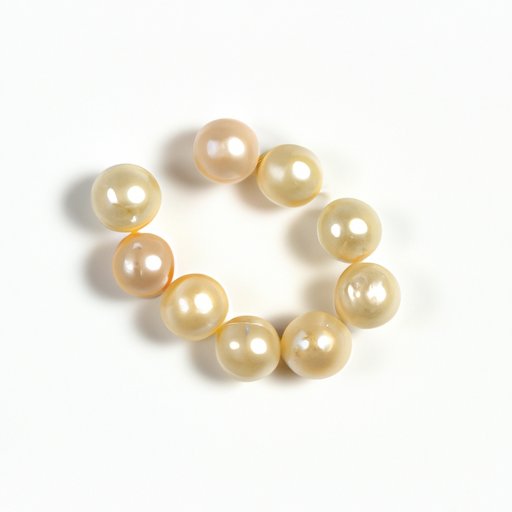
Introduction
Whether it’s for a special occasion or for everyday wear, pearls remain timeless and elegant. However, with the increase in the production of cultured pearls and imitation pearls, it can be challenging to tell the difference between genuine and artificial pearls. The purpose of this article is to provide a beginner’s guide to identifying real pearls, along with tips for purchasing them.
A Guide to Identifying Genuine Pearls: Tips for Beginners
Genuine pearls come from oysters and mussels, making them a natural gemstone. They have unique characteristics that distinguish them from synthetic pearls.
One of the primary characteristics that distinguish genuine pearls from synthetic pearls is their luster. Genuine pearls shine with a three-dimensional quality, while imitation pearls often have a flat, one-dimensional appearance.
In addition to luster, the surface of genuine pearls should be slightly textured, while synthetic pearls are usually smooth. Genuine pearls also have a warmer, more organic feel to them, whereas synthetic pearls are often cold to the touch.
Other factors to consider include the shape, size, and color of the pearl, as these are all indicators of their authenticity.
The Simple Tests You Can Do to Check If Your Pearl is Real or Synthetic
There are a few simple tests that you can do at home to determine whether a pearl is real or synthetic. One test involves rubbing the pearl against your teeth. Real pearls will feel slightly gritty or sandy due to the layers of nacre that form around the nucleus, whereas synthetic pearls will feel smooth.
Another test involves examining the pearl under a magnifying glass. Genuine pearls will have small irregularities or imperfections, while synthetic pearls will have a consistently smooth surface.
You can also do a “bounce” test by dropping the pearl on a smooth, hard surface. Real pearls tend to bounce slightly and make a clicking sound, whereas synthetic pearls will often create a softer sound and may not bounce at all.
How to Tell the Difference Between Natural and Cultured Pearls
Natural pearls are extremely rare and valuable, as they occur without human intervention. On the other hand, cultured pearls are created by inserting a nucleus or irritant into the oyster or mussel, causing the pearl to form around it.
Cultured pearls can be identified by their shape, as they tend to be more symmetrical than natural pearls. They can also be distinguished by their luster, as cultured pearls often have a brighter, more metallic appearance than natural pearls.
To determine if a pearl is natural, an X-ray can be done to reveal the presence or absence of a nucleus. This should be done only by a professional, as the process could potentially damage the pearl.
Expert Advice on Buying Real Pearls: What to Look For and What to Avoid
When purchasing real pearls, there are a few factors to consider. Quality pearls should have a consistent shape and size, as well as a high luster and minimal surface flaws.
Additionally, pearls are valued based on their color. White and cream-colored pearls tend to be the most valuable, while black pearls are also highly sought-after.
When buying pearls, it’s essential to avoid pearls that are too large or perfectly round, as these could be synthetic or artificially manipulated. It’s also important to be wary of imitations and to purchase from a reputable dealer.
Common Misconceptions About Pearl Authentication and How to Avoid Them
One of the most common misconceptions about pearl authentication is that the grittiness test should be used as the sole determining factor. While it can be a helpful indicator, there are other tests and factors to consider.
Another misconception is that all pearls are naturally white or cream-colored. However, pearls come in a wide range of colors, including yellow, pink, and even blue. Color can be an essential factor in determining the value of a pearl, as well as its authenticity.
To avoid being misled, it’s essential to do your research and buy from a reputable dealer. Ask for a certificate of authenticity and examine the pearls carefully before making a purchase.

The Anatomy of a Pearl: The Physical Characteristics That Define a Real Pearl
A pearl is composed of layers of nacre that form around a nucleus or irritant inside the shell of an oyster or mussel. The layers of nacre give the pearl its unique luster and color.
The size, shape, and color of the nucleus can affect the appearance of the pearl. The thickness and quality of the layers of nacre are also essential factors in determining the value and authenticity of a pearl.
Conclusion
Real pearls are a timeless and elegant addition to any jewelry collection, but it’s essential to be able to identify genuine pearls before making a purchase. By following the tips and tests described in this article, you’ll be able to differentiate between real and synthetic pearls and make a confident purchase that you can enjoy for years to come.
Remember to buy from a reputable dealer and do your research before making a purchase to ensure you’re buying genuine pearls.





